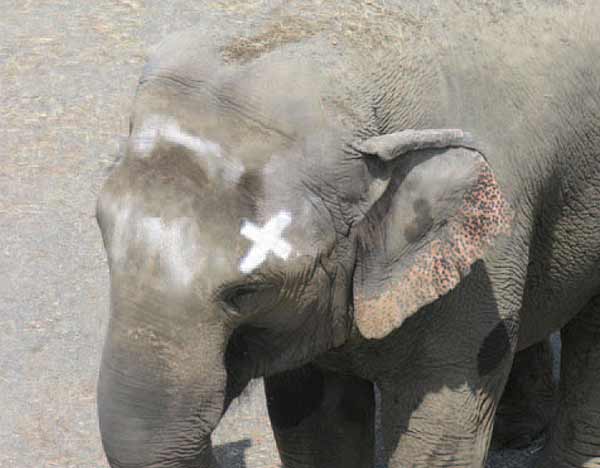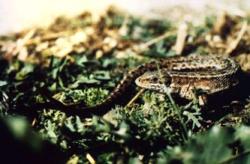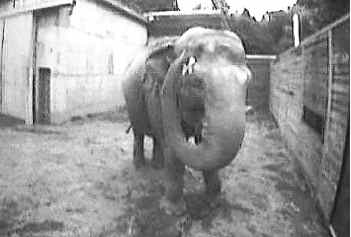
By ANDREW BRIDGES
The Associated Press
Monday, October 30, 2006; 11:02 PM
WASHINGTON -- If you're Happy and you know it, pat your head. That, in a peanut shell, is how a 34-year-old female Asian elephant in the Bronx Zoo showed researchers that pachyderms can recognize themselves in a mirror _ complex behavior observed in only a few other species.
The test results suggest elephants _ or at least Happy _ are self-aware. The ability to distinguish oneself from others had been shown only in humans, chimpanzees and, to a limited extent, dolphins.
That self-recognition may underlie the social complexity seen in elephants, and could be linked to the empathy and altruism that the big-brained animals have been known to display, said researcher Diana Reiss, of the Wildlife Conservation Society, which manages the Bronx Zoo.
In a 2005 experiment, Happy faced her reflection in an 8-by-8-foot mirror and repeatedly used her trunk to touch an "X" painted above her eye. The elephant could not have seen the mark except in her reflection. Furthermore, Happy ignored a similar mark, made on the opposite side of her head in paint of an identical smell and texture, that was invisible unless seen under black light.
"It seems to verify for us she definitely recognized herself in the mirror," said Joshua Plotnik, one of the researchers behind the study. Details appear this week on the Web site of the Proceedings of the National Academy of Sciences.
Still, two other zoo elephants, Maxine and Patty, failed to touch either the visible or invisible "X" marks on their heads in two runs of the experiment. But all three adult female elephants at the zoo behaved while in front of the jumbo mirror in ways that suggested they recognized themselves, said Plotnik, a graduate student at Emory University in Atlanta.
Maxine, for instance, used the tip of her trunk to probe the inside of her mouth while facing the mirror. She also used her trunk to slowly pull one ear toward the mirror, as if she were using the reflection to investigate herself. The researchers reported not seeing that type of behavior at any other time.
"Doing things in front of the mirror: that spoke volumes to me that they were definitely recognizing themselves," said Janine Brown, a research physiologist and elephant expert at the Smithsonian National Zoological Park in Washington. She was not connected with the study but expressed interest in conducting follow-up research.
Gordon Gallup, the psychologist who devised the mark test in 1970 for use on chimps, called the results "very strong and very compelling." But he said additional studies on both elephants and dolphins were needed.
"They really need to be replicated in order to be able to say with any assurance that dolphins and elephants indeed as species are capable of recognizing themselves. Replication is the cornerstone of science," said Gallup, a professor at the State University of New York at Albany, who provided advice to the researchers.
The three Bronx Zoo elephants did not display any social behavior in front of the mirror, suggesting that each recognized the reflected image as itself and not another elephant. Many other animals mistake their mirror reflections for other creatures.
That divergent species such as elephants and dolphins should share the ability to recognize themselves as distinct from others suggests the characteristic evolved independently, according to the study.
Elephants and mammoths, now extinct, split from the last common ancestor they shared with mastodons, also extinct, about 24 million years ago. In a separate study also appearing this week on the scientific journal's Web site, researchers report finding fossil evidence of an older species that links modern elephants to even older ancestors.
The likely "missing link" is a 27 million-year-old jaw fossil, found in Eritrea.
___
On the Net:
Proceedings of the National Academy of Sciences: http://www.pnas.org/
Fuente: The Washington Post
 Foto d'arxiu d'un gos. Foto: ARXIU / EL PERIÓDICO
Foto d'arxiu d'un gos. Foto: ARXIU / EL PERIÓDICO 




